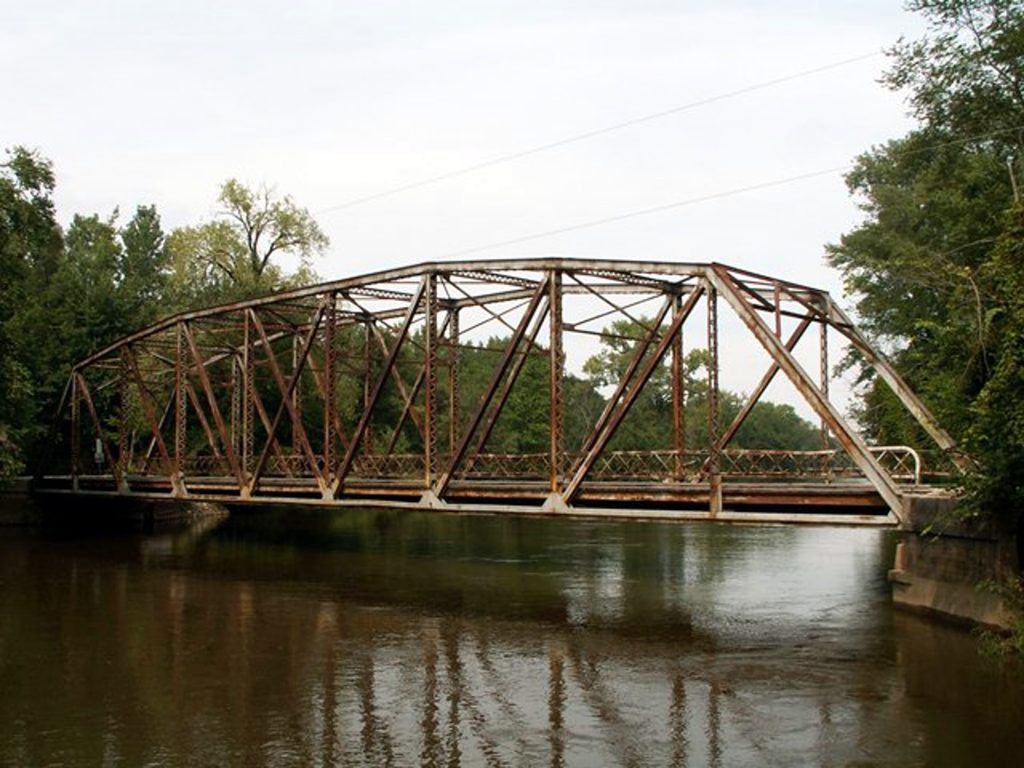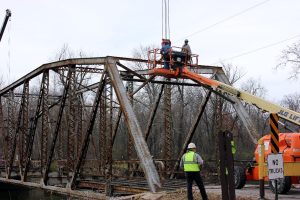Lake County Bridge #2 is a nice looking riveted through truss bridge. The Indiana Bridge marketing page for this bridge says a timber deck was added to the steel deck in 1991. Seeing a traditional late 1800s style wooden deck on a 1920s truss bridge is rather unusual. This bridge is an impressive, riveted Parker truss, and it features extensive v-lacing and is traditionally composed. It looks a little like a Camelback truss, but if you look close, there are more than five slopes present, making it a Parker truss. The portal bracing is an a-frame design. Lattice railings remain on the bridge, although there is extensive damage to these. There are Inland mill marks on the bridge as well as Illinois mill marks.
The fate of this bridge is uncertain. It is slated for replacement, but the bridge will be dismantled and put into storage for a period of at least 15 years, and during these 15 years the bridge will be available for reuse. The Kankakee Valley Historical Society has indicated they would like to relocate and preserve the bridge, but need several years to raise money. This plan will hopefully give them the time they need to do so.
How the bridge came to be built in the 1920s:
At the time there wasn’t a bridge across the Kankakee River on the Range Line road leading up to the river and passing by the Indian Gardens house. Driving from Chicago we had to go a long way around through DeMotte five miles to the east. After the house and duck marsh were completed and duck hunting was good William solved the problem of shorting the distance by getting a bridge built across the river at the Range Line Road. He did this by talking to and inviting all the Commissioners from the four counties to a duck dinner at Indian Gardens. This was an accomplishment in itself. Some of the Commissioners from the counties across the river came and were ferried across the river in a rowboat and walk the 1/2 mile to the house along the ditch sand embankment which was all that existed at the time. At the house a great time was had by all with the duck dinner and the liquor flowing freely. I was there and some of the inebriated guests from across the river now had to walk in the dark along the embankment and be ferried to the other side. This was a perilous undertaking considering their condition, darkness, river current and no landing place except a steep embankment. They made it and the bridge was voted on and built, a tribute to Williams talents.
After the bridge was built William never had the 1/2 mile road leading up to the bridge improved in order to eliminate traffic past the house. The road at first was only a one lane road with some stone gravel laid on top the sand embankment that was dredged up when the ditch was built. It was gradually improved until today 2 cars can scrape by. It is primarily a local road with little traffic and the bridge has deteriorated to the point that it may be closed.




